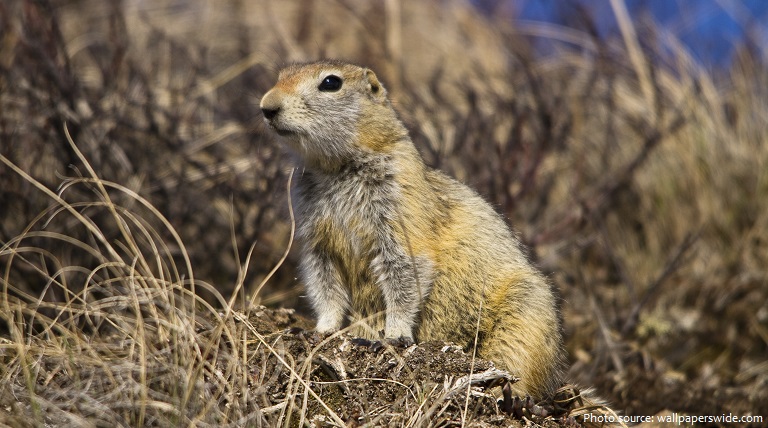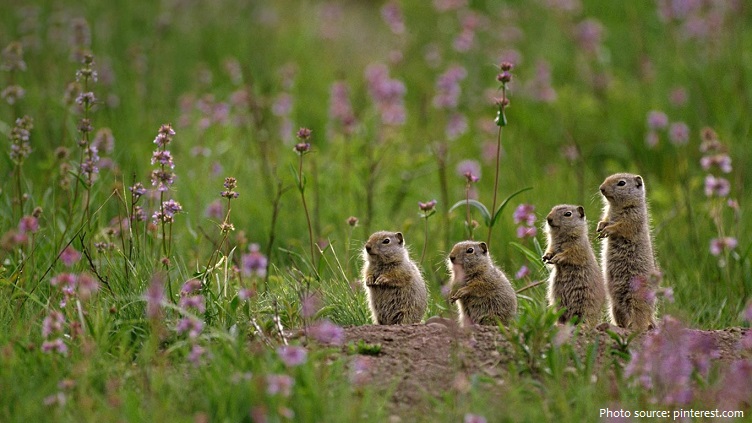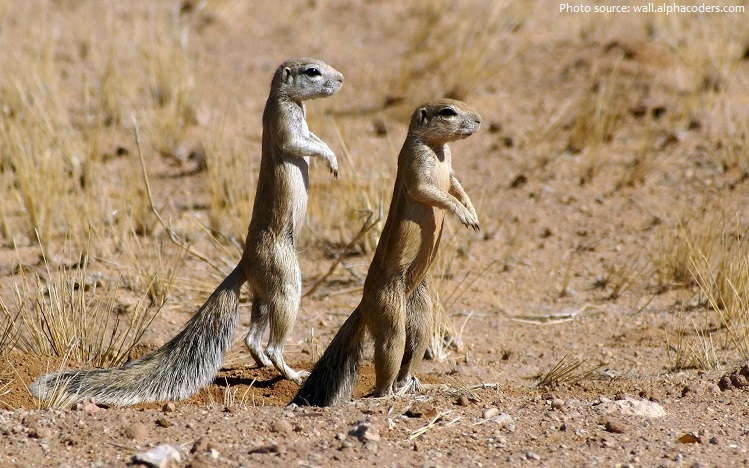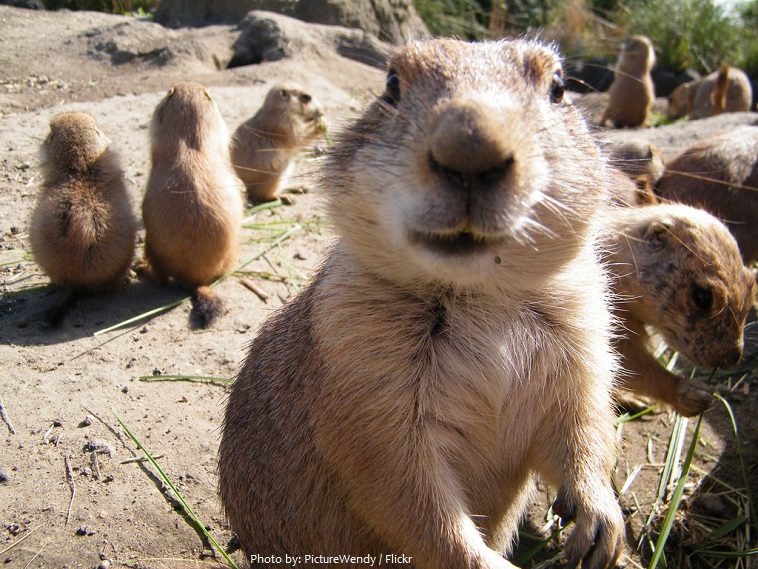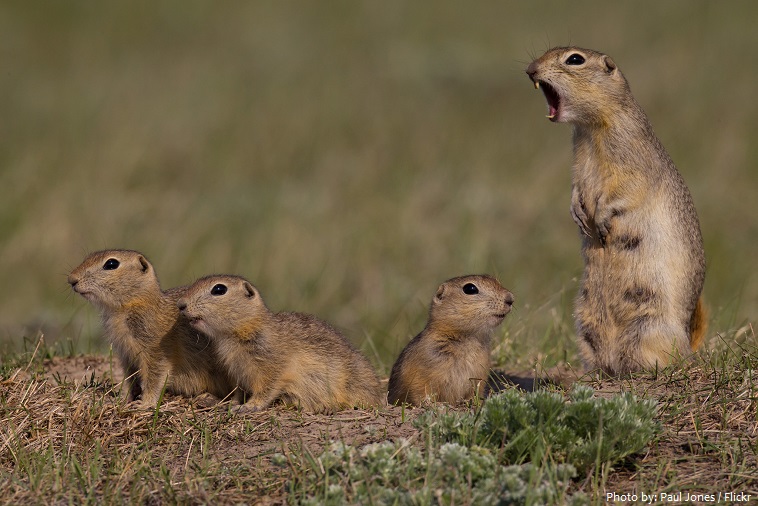The ground squirrels are members of the squirrel family of rodents (Sciuridae).
There are about 62 species of ground squirrels.
Chipmunks, prairie dogs, marmots and groundhogs are all ground squirrels!
Ground squirrels live all over the world. They are found on every continent except in Australia and Antarctica.
Their habitats are mostly open areas including rocky outcrops, fields, pastures, and sparsely wooded hillsides. They also live in grassy areas such as pastures, golf courses, cemeteries, and parks.
The average lifespan is from 3 to 18 years, depending on the species.
Ground squirrels are highly variable in size. The largest species is the alpine marmot (Marmota marmota) at 53–73 cm (21-29 in) in length and weighing 5–8 kg (11-18 lbs). The smallest species is the least chipmunk (Neotamias minimus) at 15.7–25 cm (6.2–9.8 in) in total length with a weight of 25–66 g (0.88–2.33 oz).
They have short legs, strong claws, small rounded ears, and a short or moderately long tail.
Color varies widely among species from gray, tawny, or pale brown to olive, reddish, or very dark brown. A few species are solid-colored, but most exhibit characteristic patterns such as dappling, lines of spots, white to brownish black stripes, bright reddish brown cheeks, or stripes combined with a yellowish red mantle over the head and shoulders. Underparts are white, shades of gray, tones of buff, or brown. In some species individuals may be partially or completely black (melanistic).
They tend to live together more than other squirrels, and many live in colonies with complex social structures.
These squirrels play, groom, and vocalize. Males and juveniles may help care for infants along with females.
Burrows are an integral element of ground squirrels’ lifestyles. They retreat to their burrows for many different things, including hiding out from predators, raising their offspring, stocking up on food and relaxing.
The ground squirrel is especially renowned for its tendency to rise up on its hind legs, usually whenever it senses nearby danger, or when it must see over tall grasses. The squirrel then curls its paws flat against its chest and sends a screeching call to warn other family members about the presence of predators.
These diurnal burrowing creatures are often seen busily scouring for their next meals on the floors of their living environments.
Ground squirrels are omnivorous, and not only eat a diet rich in fungi, nuts, fruits, and seeds, but also occasionally eat insects, eggs, and other small animals. They are known to eat rats and mice several times their size.
Most species of ground squirrel hibernate and are inactive throughout the winter months.
The ground squirrel mates only once per year. The mating season begins just after hibernation ends and usually only lasts a few weeks. Gestation for ground squirrels lasts between 25 and 30 days. Litters can be quite large (up to 15 babies per litter), but the average size is only seven or eight babies. Of these, only five or six are likely to survive to maturity.
Predators of flying squirrels include birds of prey, foxes, raccoons, weasels, badgers, coyotes, bobcats and snakes.
Ground squirrels are pests that eat crops and can significantly damage plants, trees and vegetables. They may chew on plastic sprinkler heads and irrigation lines.
Scientists in Russia have made a major breakthrough in permafrost research. The team, whose work is based in Siberia, successfully germinated a flower from an ice-age seed which is about 32,000 years old. The scientists found an ancient frozen nest of ground squirrels 30 meters (110 feet) underground. They took some of the seeds they found in that nest and brought them back to a lab. Their attempts to try to resurrect ice-age life from the permafrost were successful – they produced a small white tundra flower from the seed.
